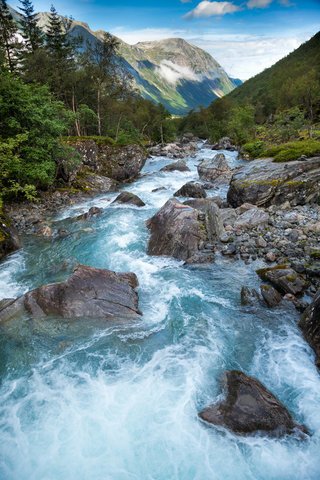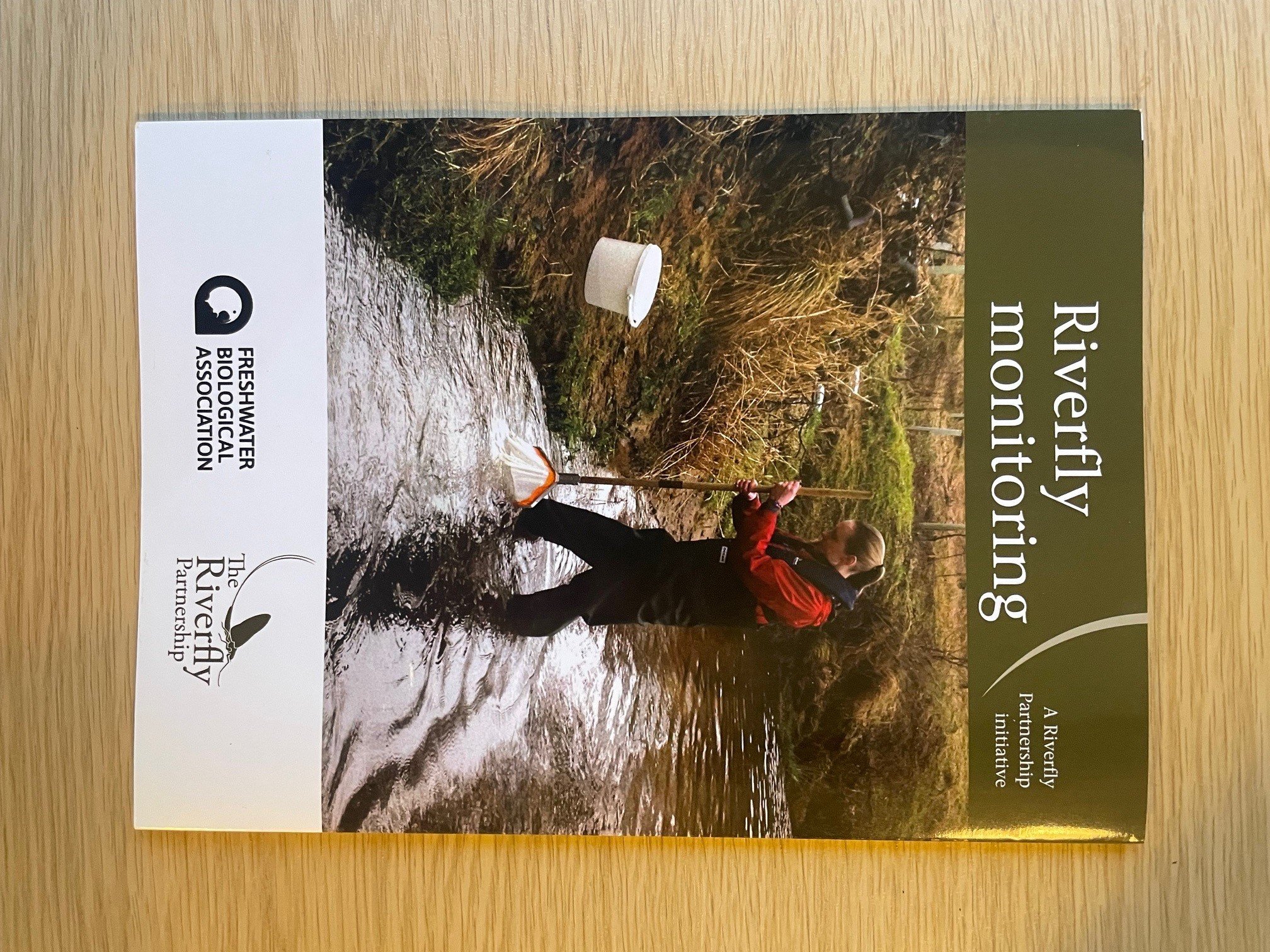Species on the edge: Arctic charr at the southern extent of its range
13 May, 2025
Louise Lavictoire (1), Colin W. Bean (2), Bernd Hänfling (3), Dave Ottewell (4), Steve Thackeray (5) & Mike Palin (6).
(1) Freshwater Biological Association, Cumbria, UK, llavictoire@fba.org.uk; (2) University of Glasgow, Glasgow, UK; (3) University of the Highlands and Islands, UHI Inverness, UK; (4) Natural England, York, UK; (5) UK Centre for Ecology & Hydrology, Lancaster, UK; (6) Echoview Software, Hobart, New Zealand.
Louise is the FBA’s Head of Science and an expert in the conservation of rare freshwater species. Here, Louise and colleagues introduce LD-CHARM, a new project that seeks to inform protection of threatened populations of the Arctic charr.
Edited by Rachel Stubbington, Nottingham Trent University
Rachel is both a Fellow of the Freshwater Biological Association and long-standing Editor of FBA articles. If you would like to submit an article for consideration for publication, please contact Rachel at: rachel.stubbington@ntu.ac.uk
Introduction
The Arctic charr (Salvelinus alpinus) is a species of ‘Least Concern’ globally according to the IUCN Red List (Ford 2024) but populations are declining across its range. Applying the same IUCN Red List criteria to Arctic charr within Great Britain, Nunn et al. (2023) concluded that, whilst populations at a GB and Scottish level could be considered ‘Vulnerable’, those in England and Wales were ‘Endangered’. All English populations are located within the Lake District (Figure 1).
Figure 1. Known extent (green), suspected (?) and extirpated (red) waterbodies containing Arctic charr within the Lake District.
Arctic charr in the Lake District
As its name suggests, the Arctic charr is a cold-water salmonid which is related to salmon and trout (Figure 2). Climate change impacts are considered to be a major factor in their decline, as well as pollution, eutrophication, acidification, afforestation, engineering, exploitation, aquaculture and non-native species (Maitland et al. 2007; Jones et al. 2008; Winfield et al. 2010). The Windermere Arctic charr population is one of the most studied in the world, with early trailblazers like Winifred Frost studying their breeding habits, diet and speciation as far back as the 1930s (Frost 1963, 1965, 1977).
Figure 2. Male Arctic charr, characterised by their striking red spawning colours, migrating to their autumn spawning grounds. Photo credit: Lindsay McCrae.
Populations of Arctic charr in Windermere
Some Lake District populations seem to be faring better than others due to variation in lake depth and the intensity of anthropogenic pressures. The Windermere population is particularly impacted by nutrient enrichment, invasive non-native species (e.g. roach, Rutilus rutilus) and the many impacts of climate change. It is one of the most complex populations in Britain, due to the existence of up to five different ‘races’ within the same lake.
In her early works, Frost described the existence of different races which were separated by their timing of spawning in autumn (November) or spring (February–March), and their location within the lake (North or South Basins). The fifth potential race, now thought to be lost, was a river-running population that spawned in the River Brathay, which feeds the North Basin. However, it has been suggested that this race may actually be a component of the North Basin autumn (lake) spawners. The spawning grounds used in the autumn are shallower (1–3 m depth) and the spring spawning grounds deeper (12–15 m; Frost 1963).
Like other salmonids, Arctic charr need a coarse, stony substrate dominated by gravel, pebbles and cobbles in which to create their nests, known as redds. To survive their incubation period, fertilised eggs require very clean spawning sediments with low levels of organic matter. High temperatures and low dissolved oxygen concentrations can be lethal for salmonid eggs, leading to poor recruitment of juvenile fish, and this can have lasting effects on future populations.
The Lake District Charr Recovery and Management project
As many of our regular readers will know, the Freshwater Biological Association recently embarked upon a partnership project, snappily titled Lake District Charr Recovery and Management (LD-CHARM).
LD-CHARM is currently funded by Natural England’s Species Recovery Programme and the Environment Agency, as well as by some of our private partners, Echoview Software and Blueprint Subsea. The partnership brings together experts in the field to address important knowledge gaps, namely:
Are Arctic charr still using their historic spawning grounds in Windermere?
What is the condition of Windermere spawning grounds, and what are the major human pressures reducing their condition?
Do the different races within Windermere constitute genetically independent populations?
What is the genetic structure, differentiation and diversity of Arctic charr populations in the Lake District?
Answering these questions will help us to design a conservation plan, prioritise restoration actions and identify further research needs for this species in England, whilst setting this information in the wider, national context.
New non-destructive research methods into Arctic charr spawning
Addressing questions about spawning ground use, searching for potential new spawning areas or even discovering previously unidentified populations in new water bodies was historically a significant undertaking, requiring large teams of experienced ecologists and many days of fieldwork. It was also relatively destructive, with gill netting killing almost all captured individuals.
Reduced budgets have meant that the monitoring of fish species, particularly in large lakes, has declined hugely in recent decades, limiting information available to inform population studies and conservation strategies. Recently developed non-lethal methods can help with these assessments, although cannot replace like-for-like the data gathered about growth rates, absolute population size and some other key biological parameters.
Environmental DNA (eDNA) can detect the presence of target species and other species of interest (Hänfling et al., 2016; Di Muri et al., 2023), whilst hydroacoustic surveys can assess fish populations and distribution as well as spawning ground condition (Winfield, Fletcher & James, 2008; Winfield et al., 2010). LD-CHARM will use these non-destructive methods to assess both historical and contemporary spawning ground use in Windermere. The first Oculus hydroacoustic trial for the LD-CHARM project took place in early October 2024 (Figure 3).
Figure 3. Conducting the first Oculus hydroacoustic trial for the LD-CHARM project in early October 2024.
These methods will also be used to search for potentially unrecorded populations, and to identify potential ‘Ark’ sites: refuges to which at-risk populations could be translocated, preventing their loss if environmental conditions at their current sites cannot be improved in time to save populations from extirpation. We require a better understanding of wider Lake District fish communities and how potential Ark sites could be integrated into different waterbodies.
Importance of genetic diversity for conservation action
Understanding the genetic diversity of a species is also key to designing effective conservation plans. How do we know what to save if we don’t know how genetically diverse or distinct populations are? Genetically distinct populations or distinct genetic clusters, also known as evolutionary significant units (ESUs), are an important aspect of biodiversity. Understanding the genetic relatedness among both extant and extirpated populations can inform potential conservation translocations. If ESUs exist within a single lake, they may be reproductively isolated and likely use separate spawning grounds, making the preservation or restoration of these habitats a conservation priority (Adams et al. 2006).
Genetic diversity within populations is also an important indicator of both a population’s size and its capacity to adapt to environmental change. Low genetic diversity may signal populations in need of urgent conservation attention. In some cases, low diversity could be mitigated through translocations from closely related populations; however, such actions must be carefully evaluated to avoid undermining the unique characteristics and adaptations of local populations. The FBA and our LD-CHARM partners are fortunate to have an extensive collection of fish scales that dates back to the 1930s, which will help answer some important genetic questions without the need to collect new specimens.
Next steps for the LD-CHARM project
LD-CHARM will have a busy year working to advance our understanding of the Arctic charr, one of the Lake District’s most enigmatic species. We will report our findings in future issues of FBA Voice, so watch this space!
References
Adams, C.E. et al. 2006. Does breeding site fidelity drive phenotypic and genetic sub-structuring of a population of arctic charr? Evolutionary Ecology 20: 11–26. https://doi.org/10.1007/s10682-005-2489-4
Ford, M. 2024. Salvelinus alpinus (Europe assessment). The IUCN Red List of Threatened Species 2024: e.T2. https://apistaging.iucnredlist.org/species/242222668/221242081
Frost, W.E. 1963. The homing of charr Salvelinus willughbii (Günther) in Windermere. Animal Behaviour 11: 74–82. https://doi.org/10.1016/0003-3472(63)90013-7
Frost, W.E. 1965. Breeding habits of Windermere charr, Salvelinus willughbii (Gunther)*, and their bearing on speciation of these fish. Proceedings of the Royal Society B: Biological Sciences 163: 232–284. https://doi.org/10.1098/rspb.1965.0070
Frost, W.E. 1977. The food of Charr, Salvelinus willughbii (Günther), in Windermere. Journal of Fish Biology 11: 531–547. https://doi.org/10.1111/j.1095-8649.1977.tb05710.x
Hänfling, B. et al. 2016. Environmental DNA metabarcoding of lake fish communities reflects long-term data from established survey methods. Molecular Ecology 25: 3101–3119. https://doi.org/10.1111/mec.13660
Jones, I., Winfield, I. & Carse, F. 2008. Assessment of long-term changes in habitat availability for Arctic charr (Salvelinus alpinus) in a temperate lake using oxygen profiles and hydroacoustic surveys. Freshwater Biology 53: 393–402. https://doi.org/10.1111/j.1365-2427.2007.01902.x
Maitland, P.S. et al. 2007. The status of Arctic charr Salvelinus alpinus in Britain and Ireland. Ecology of Freshwater Fish 16: 6–19. https://doi.org/10.1111/j.1600-0633.2006.00167.x
Di Muri, C. et al. 2023. Spatio-temporal monitoring of lake fish spawning activity using environmental DNA metabarcoding. Environmental DNA 5: 849–860. https://doi.org/10.1002/edn3.343
Nunn, A.D. et al. 2023. Extinction risks and threats facing the freshwater fishes of Britain. Aquatic Conservation: Marine and Freshwater Ecosystems 33: 1460–1476. https://doi.org/10.1002/aqc.4014
Winfield, I.J. et al. 2008. The Arctic charr (Salvelinus alpinus) populations of Windermere , UK: population trends associated with eutrophication, climate change and increased abundance of roach (Rutilus rutilus). Environmental Biology of Fishes 83: 25–35. https://doi.org/10.1007/s10641-007-9235-4
Winfield, I.J. et al. 2010. Population trends of Arctic charr (Salvelinus alpinus) in the UK: Assessing the evidence for a widespread decline in response to climate change. Hydrobiologia 650: 55–65. https://doi.org/10.1007/s10750-009-0078-1
Further FBA reading
The Freshwater Biological Association publishes a wide range of books and offers a number of courses throughout the year. Check out our shop here.
Get involved
Our scientific research builds a community of action, bringing people and organisations together to deliver the urgent action needed to protect freshwaters. Join us in protecting freshwater environments now and for the future.












